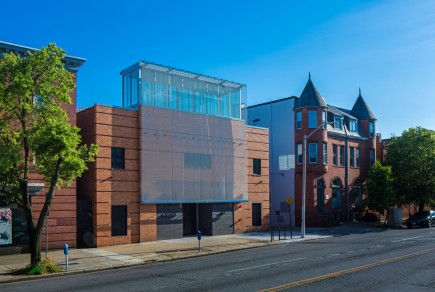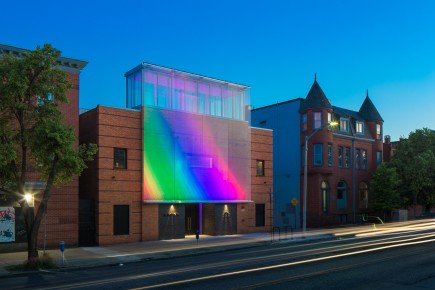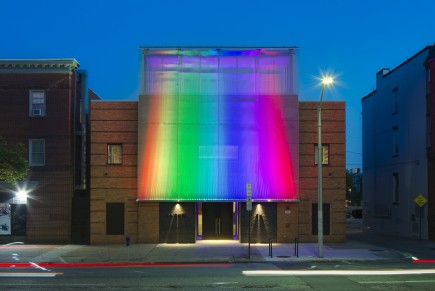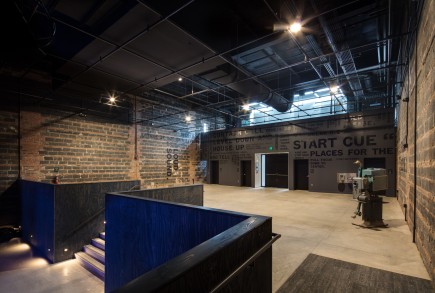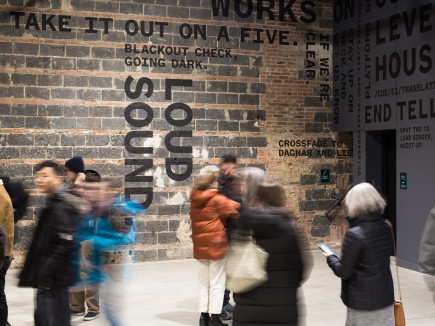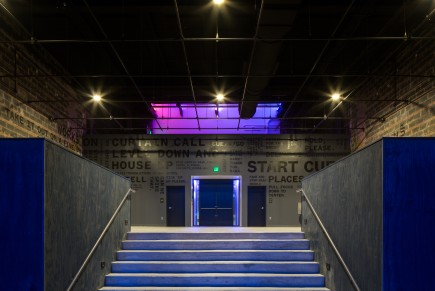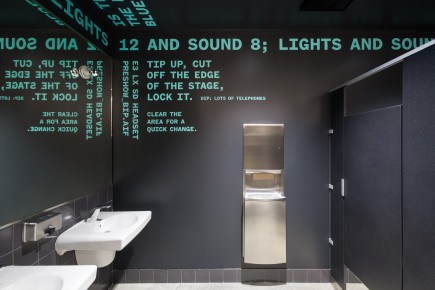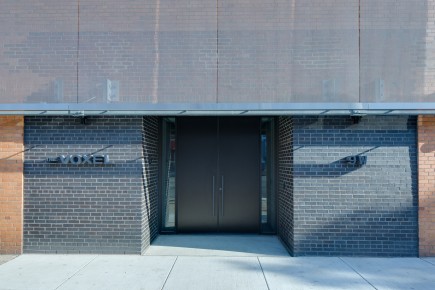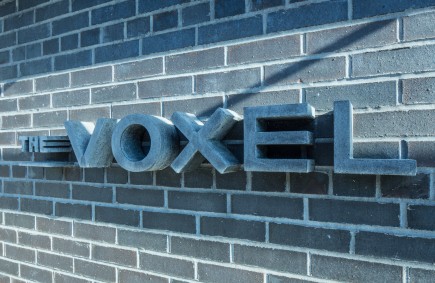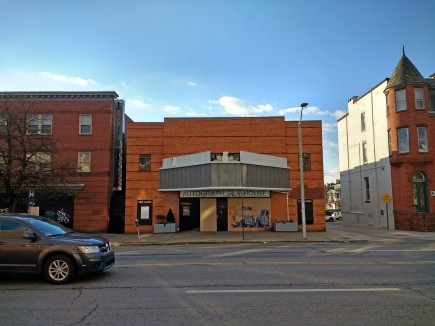1006 Morton Street
Baltimore, MD 21201
410.576.9131 | RW1haWw=
The Voxel - Adaptive Reuse of the Autograph Playhouse
Commercial, Cultural, Award Winning
View GalleryLike many historic movie theaters in Baltimore, the Autograph Playhouse was left mainly forgotten after it closed in 1985 until a performing arts software company, Figure 53, stepped in to give it new life in 2015. After extensive renovations, the theater offers a dynamic transformation that communicates its two missions: by day, it is the teaching center and research lab for Figure 53; by night, it is a theater, incubator, and resource for performing artists.
Originally built in 1946 as the 800-seat Homewood Theatre, the building evolved through multiple renovations as an art house and single-screen movie theater before serving as a church and space for various performance groups. When purchased in 2015, the building required substantial upgrades to function as a modern performing arts theater. Prominently located within the Old Goucher Historic District, historic tax credits were not pursued both due to lack of consideration as a contributing property and to allow for fewer limitations on the renovations. The re-envisioned facility offers a promising example of how forgotten historic structures in our City can be thoughtfully and economically repurposed to serve new and evolving roles for their communities.
Dubbed “The Voxel,” the new venue is intentionally conceived as a flexible and changeable space that is informed by community use. In computer graphics, a voxel is a three-dimensional pixel that is rendered in a grid in relation to other voxels. Similarly, the building design is a collection of cubic volumes in a meaningful dialogue rendered by the users with the tools of theater performance. The former marquee has been removed to allow for a new expression that incorporates a vertical glass light monitor shroud behind a suspended metal mesh screen. During the day, the mesh façade disappears and lets the authentic brick be visible. At night, light is projected onto the façade with dynamic control for varied rendering of color, motion, and sound using software developed by Figure 53. The entrance vestibule is articulated as a portal that is illuminated by cove light fixtures with color control in sync with the façade and light monitor.
Within the transformed building, the modifications are intentionally restrained to allow for flexibility of use. The entry level offers open space for pre-function or small performance, with new restrooms incorporated below the existing mezzanine. Down a half-level a black-box theater supports larger performances and events. A continuous pipe grid extends above both spaces for integration of lighting, speakers, and curtains as appropriate for each space use and configuration. Stage cues have been applied to interior surfaces tying together the existing and new. Energy-efficient building systems, a new roof, and new windows all support the building’s renewed operations.
